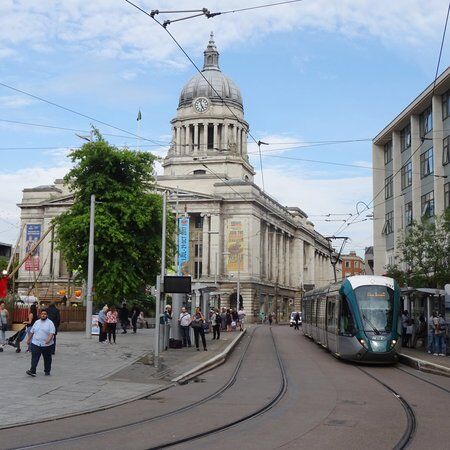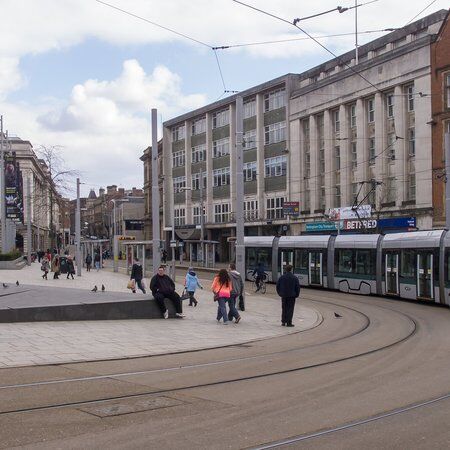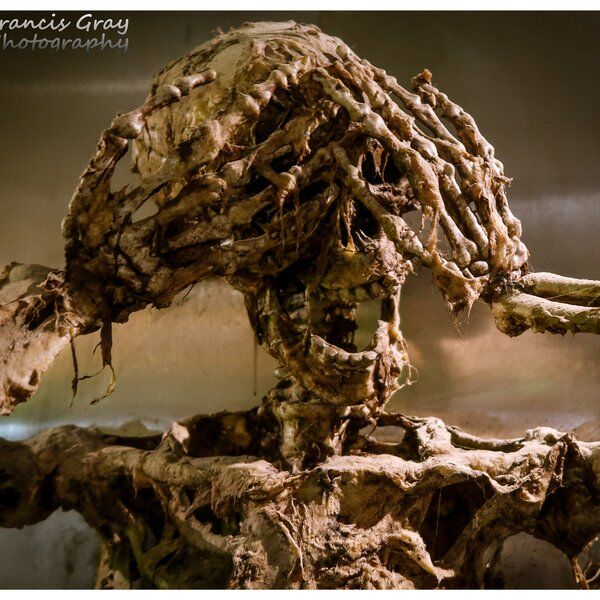
Discover Nottingham's Historic Old Market Square
Dating back to the 11th Century, Nottingham's Old Market Square was originally the dividing point between Nottingham's Norman and Anglo Saxon towns, after the Norman Conquest in 1066. The square's historical significance is underscored by the mysterious construction of a dividing wall, referenced as early as 1530, which outlined its space during the late mediaeval period. It even has ties to characters from English folklore, click to read more about the legendary Robin Hood.
Today, at 11,000 square metres, the Old Market Square is the second-largest square in Britain, surpassed only by London's Trafalgar Square. The surroundings are characterised by a mix of listed buildings and post-war developments. Designated as the Old Market Square Conservation Area, the square's charm extends to neighbouring streets like King Street, Angel Row, Beastmarket Hill, and Council House. Each day it is alive with activity housing major events like the Riviera Beach in summer and the Christmas Winter Wonderland in winter, alongside regular farmers' markets showcasing local produce throughout the year.

The History of Nottingham Old Market Square
Early Origins
At first, Old Market Square in Nottingham was not the main site for the weekday market. However, as tensions grew between the Norman population around the Castle and the Saxon town, William Peveril, the architect of Nottingham Castle, established a new market on neutral ground. This eventually evolved into the Old Market Square, thriving from the 11th century until its relocation in 1928.
The Old Square Market Wall
Scott Lomax, the city archaeologist at Nottingham City Council, reveals that earlier documents concerning the market make no mention of the wall that once stood there. However, records indicate that repairs to the wall, which was initially constructed of stone, were undertaken in 1579.
While the exact purpose of the wall remains debated, there are many theories. Lomax speculates that it may have functioned to separate livestock from produce or even to prevent conflict between the inhabitants of the different boroughs.
The Exchange
The establishment of the Exchange in 1724 by Marmaduke Pennell was a turning point in the square's development. This structure became administrative offices, alongside the Old Guildhall in Weekday Cross (the original marketplace).
However, beneath the Exchange, conditions in the Shambles, Nottingham's meat market, were far from sanitary. Tragically, in 1836, a fire sparked by a gas-lit clock engulfed the building, leading to its demolition.

Redesigning Old Market Square
Why did they Redesign?
Nottingham's Old Market Square underwent a transformation driven by the city's ambition to get more use out of it for civic events. Originally designed by architect T.C. Howitt in 1929, the square, then known as "Slab Square" thanks to its bleak concrete base, suffered from poor lighting, uninviting architecture, and excessive traffic, which limited its potential as a public space.
The Redesign Process
In response to these challenges, the city's Development Department launched the Square One competition in 2003 to find a design that was more inclusive and attractive. Gustafson Porter, an architectural firm, won the competition with a design that emphasised simplicity, functionality, and respect for the square's heritage.
The redesign project commenced in 2005 with funding from various sources, including the European Regional Development Fund and private contributions totaling £6 million. Completed in March 2007 the total cost reached £17 million.
The redesigned Old Market Square, with its new pretty granite paving stones, quickly became the place to be, hosting events throughout the year. Seasonal transformations, facilitated by the strategic placement of flowers, shrubs, and trees, enhanced the square's appeal and ecological value. Other additions included the Speaker's Corner established in 2009.

Traditions and Events at Old Market Square
Throughout its long history, Old Market Square served as a site for public punishment and other traditional activities. Those who committed offences faced public humiliation, including floggings and beast baiting. Furthermore, Old Market was also where the Luddites protested against industrial machinery in the early 19th century, and where rioting broke out in 1831 over the rejection of the Reform Bill. The square also hosted Nottingham's famous Goose Fair until 1928.
Today, Old Market Square continues to host events, such as St. George's Day, May Day, Light Night in February, and New Year's Eve celebrations. As a main feature of Nottingham, affectionately referred to as the heart of the city, the Square has also been the setting for many ceremonial and sporting events, concerts, and performances, including the installation of a Spiegel tent. Additionally, it houses attractions such as the Nottingham City Transport Travel Centre and the Bell Inn, one of the UK's oldest pubs.

There are also many markets held at the Old Market Square (shock!). These are usually European-run and themed and pop up for a few weeks each year as part of the annual German Christmas Markets.
Clearly, it's a great place for events but it's also just a great place generally – visitors can chill out on the granite terraces, dotted with seating and greenery, or throw a coin in and make a wish at the central water fountain.
Interested in finding more places like this? Try one of our Treasure Trails in Nottingham - untangle cryptic clues as a team, as you are taken on a journey to the most unique, unusual and bizarre corners of Nottingham.













